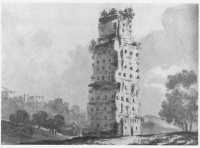Burial
From The Art and Popular Culture Encyclopedia
|
Related e |
|
Featured: |
Burial, also called interment and inhumation, is the act of placing a person or object into the ground. This is accomplished by excavating a pit or trench, placing an object in it, and covering it over.
History
Intentional burial, particularly with grave goods, may be one of the earliest detectable forms of religious practice since, as Philip Lieberman suggests, it may signify a "concern for the dead that transcends daily life." Though disputed, evidence suggests that the Neanderthals were the first human species to intentionally bury the dead, doing so in shallow graves along with stone tools and animal bones. Exemplary sites include Shanidar in Iraq, Kebara Cave in Israel and Krapina in Croatia. Some scholars, however, argue that these bodies may have been disposed of for secular reasons.
The earliest undisputed human burial, discovered so far, dates back 100,000 years. Human skeletal remains stained with red ochre were discovered in the Skhul cave at Qafzeh, Israel. A variety of grave goods were present at the site, including the mandible of a wild boar in the arms of one of the skeletons.
Prehistoric cemeteries are referred to by the more neutral term grave field. They are one of the chief sources of information on prehistoric cultures, and numerous archaeological cultures are defined by their burial customs, such as the Urnfield culture of the European Bronze Age.
See also

_.jpg)

